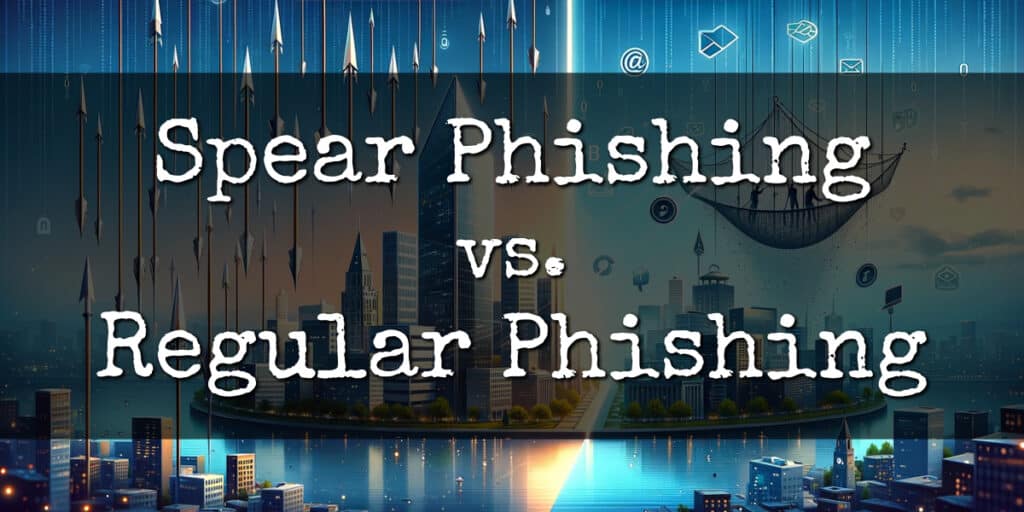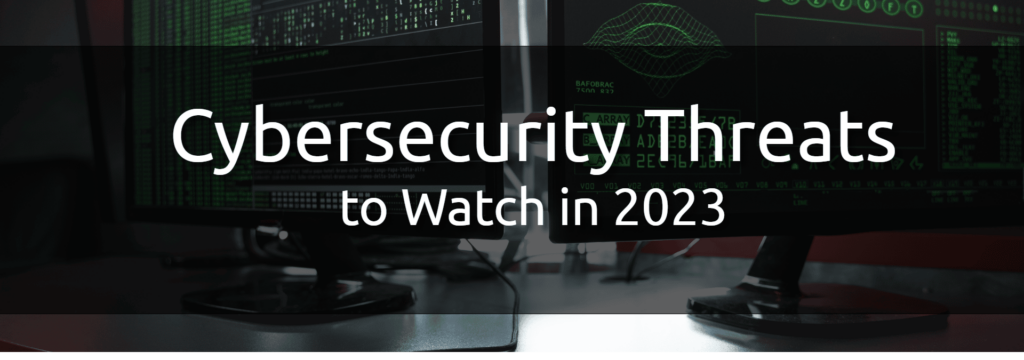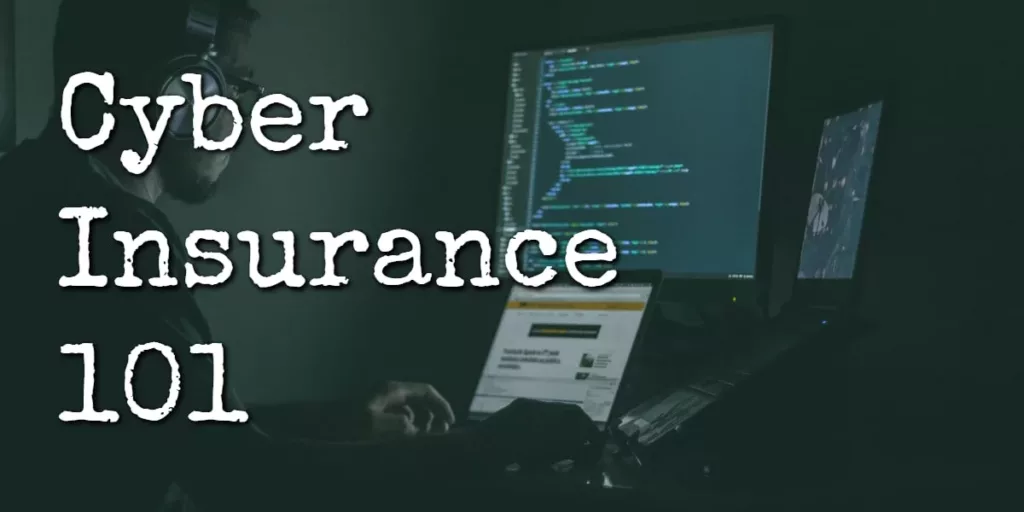What sets spear phishing apart from standard phishing? It’s targeted precision. Unlike the broad approach of standard phishing, spear phishing zooms in with emails that are customized using personal data to trick specific victims.
Unpacking the key differences between spear phishing and regular phishing, this article highlights why grasping these distinctions is crucial for protecting your information. It’s not just about spotting the scams; it’s about understanding the tactics behind them to stay one step ahead.
On This Page:
What is Phishing?
Phishing is a broad-spectrum cyber attack that exploits various communication platforms like email, social media, and instant messaging. These attacks often lead victims to fake websites via malicious links, aiming to steal sensitive information such as financial information or login information. It’s a game of numbers, sending out thousands of generic messages hoping for a few bites.
These messages often come with red flags like impersonal greetings, poor grammar, or urgent requests that push you towards quick, thoughtless actions. However, it’s not just emails that pose a threat. Voice phishing (Vishing), SMS Phishing (Smishing), and various other social engineering tactics are among the many forms phishing can take.
But what happens when this threat becomes more focused, personalized, and directed? Enter spear phishing, the more cunning cousin of phishing.
What is Spear Phishing?
This method doesn’t scatter shots in the dark; it snipes. Spear phishing zeroes in on specific individuals or organizations, armed with research and details tailored to the victim’s life or job. Imagine receiving an email that mirrors the tone of a colleague or a project update that feels incredibly relevant. That’s spear phishing at work—using your name, your position, or recent activities to build trust and urgency.
Behind the scenes, attackers mine social media and public records, crafting messages so convincing they’re hard to ignore. These emails might mimic a friend or a trusted company, using personal touches and urgent language to trick recipients into sharing sensitive info, downloading a malicious attachment, or clicking on a dangerous link.
Spear phishing attacks utilize sophisticated attack methods such as email spoofing, dynamic URLs, and zero-day vulnerabilities to bypass security controls. They may even deploy specialized bait like fake HR portal login pages to capture credentials—a technique beyond the scope of standard phishing.
Key Differences Between Phishing and Spear Phishing

While both phishing and spear phishing messages exploit human vulnerability and are intended to trick victims into revealing sensitive information, they differ in their approach and execution.
Phishing casts a wide net, targeting a large volume of random individuals, whereas spear phishing is a highly targeted attack that may home in on specific employees or companies.
Spear phishing emails are meticulously tailored and often use information gleaned from social media or other sources to simulate authenticity, unlike phishing messages which are generic and broadly applicable.
These spear phishing attempts can be particularly challenging to identify and defend against, especially when a spear phishing email is crafted with precision. While phishing utilizes generic, impersonal language with a sense of urgency meant to panic recipients into immediate action, spear phishing typically involves communication that appears more credible and personalized.
Common Types of Spear Phishing Attacks
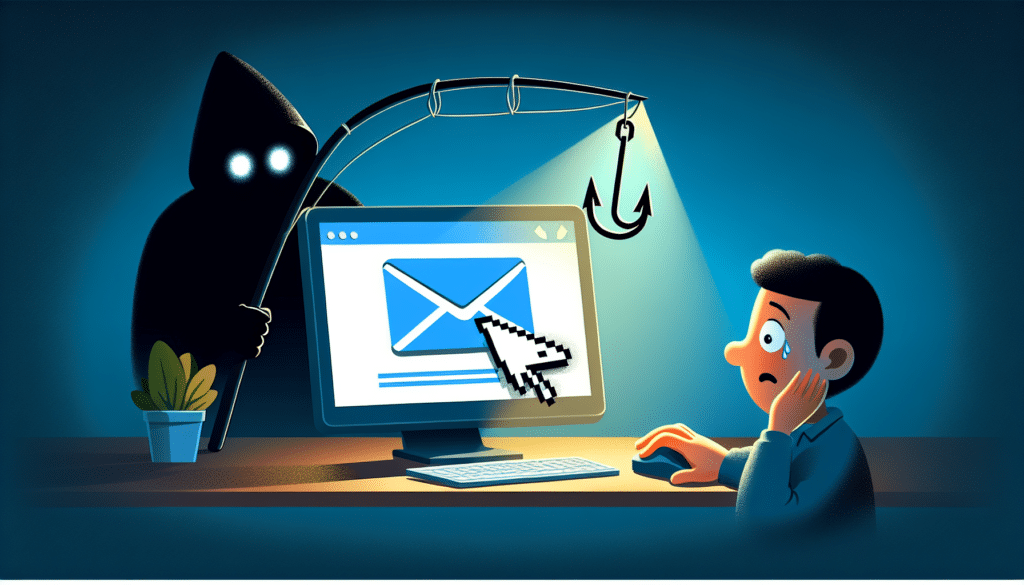
Spear phishing attacks can take various forms depending on who they target or impersonate. Some attackers focus on specific individuals within an organization by personalizing attacks based on the victim’s names, positions, and contact details to steal login credentials and credit card details.
There are also forms like Angler phishing, Domain spoofing, and Watering hole phishing, each with its unique strategies and targets.
Business Email Compromise (BEC)
Business Email Compromise (BEC) is a cunning form of spear phishing designed to trick companies into sending money or leaking sensitive data. Attackers manipulate employees into making unauthorized money transfers or disclosing confidential information by impersonating high-level executives or trusted partners via email.
CEO fraud (described in more detail below) is a prime example, where fraudsters send emails that convincingly appear to come from a company’s top executive, urging an immediate transfer of funds to a specified account—usually belonging to the attacker. These scams are dangerously effective, often bypassing traditional security measures due to their personalized approach and the urgency they convey.
BEC attacks aim to siphon off funds and access and exploit sensitive company data, posing a significant threat to organizational security and integrity.
Whale Phishing
Whale phishing, or Whaling, is a type of spear phishing that targets high-profile employees, such as chief executive officers (CEOs), chief financial officers (CFOs), and other senior executives.
Whaling attacks aim to gain access to confidential company information or facilitate large financial transfers. This is because these individuals have access to critical information and financial systems.
Whaling emails are meticulously crafted with personalized details about the target, often exhibiting a sense of urgency and using a professional tone to persuade the victims, which enhances their deceptive nature. These attacks may also involve direct communication, such as follow-up phone calls or SMS messages, to validate the fraudulent request and coax victims into compliance through social engineering.
CEO Fraud
CEO fraud is a targeted spear phishing tactic designed to exploit junior employees by impersonating high-ranking executives and pressuring them to comply with fraudulent requests. In CEO Fraud scenarios, cybercriminals may spoof or hijack executive email accounts to issue false wire transfers to fraudulent accounts or divulge sensitive company information.
CEO Fraud has led to significant financial losses worldwide, with reports indicating a substantial increase in identified global exposed losses over a single year. Companies should report CEO Fraud to financial institutions, law enforcement, and the FBI’s Internet Crime Complaint Center (IC3) as part of their immediate response strategy.
Recognizing Warning Signs of Phishing and Spear Phishing
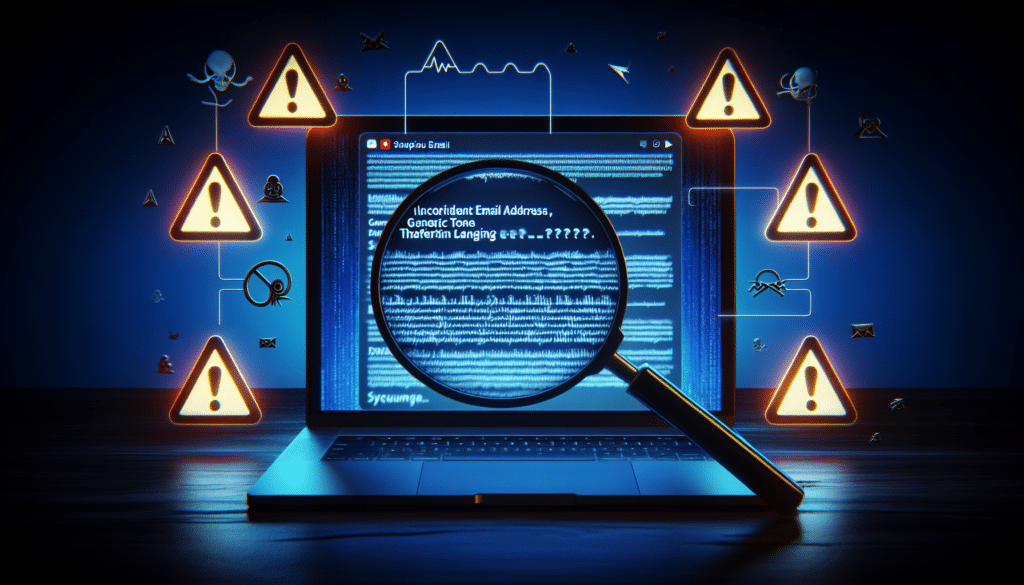
Acknowledging the warning signs of phishing and spear phishing is a pivotal defense against these attacks. Verifying both the sender’s name and email address is vital, as attackers can forge familiar names to make the email seem legitimate. Emails from trusted sources that contain personal information but deviate from known patterns or make unexpected requests should be scrutinized.
Look for inconsistencies in email addresses, links, and domain names to identify potential phishing attempts. Be cautious of emails that:
Have a generic tone or greeting
Contain grammar and spelling errors
Include threatening language or a sense of urgency
Request actions that depart from usual procedures, especially regarding financial matters
These signs might indicate a phishing attack and should be taken as a red flag.
Protecting Against Phishing and Spear Phishing
To defend against the cunning tactics of phishing and its more targeted sibling, spear phishing, layering your security measures is key. Start with the basics: ensure your email is fortified with security tools that scrutinize incoming messages for signs of deceit. Antivirus software should be non-negotiable, providing a safety net against malicious downloads. But don’t stop there.
Security Awareness Training
Security and phishing awareness training programs are essential for creating a culture of security within an organization and equipping employees to combat cyber attacks. Security Awareness Training can help employees recognize the subtle cues of phishing emails, such as urgency and trust exploitation. Reporting suspicious emails is encouraged as it can help identify and mitigate phishing threats within an organization.
Enhancing security awareness training with phishing simulations offers a hands-on learning experience, letting employees practice identifying and reacting to simulated phishing threats. These simulations mimic real-life phishing attacks, designed to test employees’ ability to detect and respond to sophisticated phishing attempts. They provide a safe environment for learning and practicing cybersecurity skills.
It’s important to remember that the goal of these simulations is educational; if an employee falls for a simulated attack, it should not lead to reprimand. Instead, use these moments as opportunities to strengthen understanding and improve phishing defense tactics across the team.
Multi-factor Authentication
Multi-factor authentication (MFA) contributes an additional security layer that goes beyond simple password protection. Implementing multi-factor authentication is critical in safeguarding against the risk of compromised credentials prevalent in phishing or spear-phishing attacks.
Security keys serve as a robust form of multi-factor authentication, providing additional security for logins, and are highly recommended. They reduce the risk of compromise due to human errors and offer significant protection against persistent and sophisticated threat actors.
Email Security & Authentication
Together, SPF, DKIM, and DMARC form email authentication protocols that prevent unauthorized senders from dispatching spoofed emails using your domain.
SPF allows email servers to verify that incoming mail from a domain comes from a host authorized by that domain’s administrators.
DKIM ensures that the contents of emails are trusted and have not been tampered with or compromised.
DMARC builds on SPF and DKIM to improve and monitor the domain’s protection against phishing and spoofing attempts.
Beyond SPF, DKIM, and DMARC, emerging technologies such as BIMI and advanced threat protection services further enhance email security. BIMI (Brand Indicators for Message Identification) empowers organizations to display their logos in supported email clients, providing a visual trust marker that helps distinguish genuine emails from fraudulent attempts.
Additionally, advanced threat protection (ATP) solutions are becoming indispensable in the fight against sophisticated phishing and spoofing attacks. These solutions use a combination of AI, machine learning, and real-time threat intelligence to analyze email behavior and content, effectively identifying and blocking malicious emails before they reach the inbox.
Organizations can create a comprehensive defense strategy that significantly mitigates the risk of email-based threats by integrating these newer techniques with traditional protocols like SPF, DKIM, and DMARC.
Real-life Examples of Spear Phishing Attacks
To underscore the seriousness of spear phishing, we’ll examine some real-world instances.
In a spear phishing attack against Google and Facebook, a fake firm directed employees to wire approximately $100 million into fraudulent accounts between 2013 and 2015.
Ubiquiti Networks lost $46.7 million in a 2015 spear phishing attack but recovered about $15 million after alerting their bank.
Crelan Bank was tricked into transferring $75.8 million to a controlled account by attackers impersonating the CEO in a 2016 spear phishing attack.
FACC, an Austrian aerospace manufacturer, had a €42 million loss due to a BEC scam involving their CEO’s hacked email in 2016.
These examples demonstrate the significant financial losses and reputational damage resulting from successful spear phishing attacks.
Summary
Understanding the differences between regular phishing and spear phishing is vital to enhancing personal and business cybersecurity.
Implementing security measures such as email security tools, antivirus software, multi-factor authentication, and regular security awareness training sessions can help protect against these attacks. Recognizing the warning signs and proactively reporting suspicious emails can further mitigate the risk. Remember, in the realm of cybersecurity, knowledge is power.
